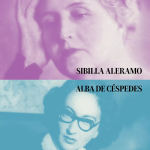
After a decade, Jonathan Glazer returns with “The Zone of Interest,” earning his first official competition entry at the Cannes Film Festival.
Glazer’s career began with directing numerous award-winning commercials and music videos, including Radiohead’s “Karma Police.” The British director then shifted towards experimental narratives, directing “Sexy Beast,” “Birth,” and the critically acclaimed “Under the Skin” starring Scarlett Johansson.
“The Zone of Interest” takes a different trajectory, set during World War II. It unfolds the complex love story of Rudolf Höss, the commandant of Auschwitz, and his wife, Hedwig, who built their dream home next to the infamous concentration camp—a dark chapter in human history.
Glazer promises to keep audiences glued to the screen once again.
For more information, visit cannes.com
In light of his latest film’s release, revisit Armelle Leturcq’s interview with Jonathan Glazer:
In the late 1990s, you produced remarkable music videos for bands like Massive Attack. Have you completely stopped doing so?
Yes, I’ve stopped. I enjoyed working with music, but my perspective on it has entirely changed. Occasionally, I might do a video, but that chapter is closed. It’s not music I’ve stopped; it’s that the conditions have changed—budgets are much lower now. Music videos as an art form were still evolving, especially electronic music, which was incredibly exciting fifteen years ago.
When did you decide to transition to feature films?
It was probably during my university days while studying theatre design. That’s where the seed was planted. Moving on to film felt like a natural progression from making videos and commercials.
How did you secure funding for your first film?
My first film wasn’t my script. Screenwriters chose me because of my work in music videos. At that time, there was a desire for music video directors to break into cinema. “Sexy Beast” had an excellent script, and funding came relatively easily, though it wasn’t a large budget.
What inspired you to make “Under the Skin”?
My producer, Jim Wilson, suggested adapting Michel Faber’s novel, which took 12 years from reading the book to completing the film. It was an enriching process. I was interested in creating something inspired by the book, not a direct adaptation. The final product is vastly different but spiritually connected.
The process of writing the screenplay was lengthy, wasn’t it?
Yes, I collaborated with three different writers. The most productive period was with the third writer, which led to the film’s final script. It’s incredible to think about all the versions we went through. The screenplay became very precise, not in terms of dialogue but in its deepest intentions.
The atmosphere in “Under the Skin” is unique, blending realism with science fiction. Was this mix intentional?
Absolutely. We decided to do something very real with the alien, who is central to the film. I wanted the audience to understand her and feel her presence. The fusion of these two worlds was exhilarating. By adopting the alien’s perspective, we almost transcended reality.
“Under the Skin” might disappoint those expecting a conventional sci-fi film. Did you aim to redefine the genre?
Not at all. The film doesn’t fit the typical sci-fi mold because it’s too humanized. Sci-fi wasn’t the right tool for this story. We ended up with a black void, which became our canvas and mirror.
The alien is female, alluring yet dangerous. Is the film a commentary on modern gender relations?
Honestly, I’m more interested in human stories than gender narratives. The gender aspect arises because of the alien’s seductive appearance, which employs classic sci-fi and noir tropes. The focus is on human stories, not gender politics.
Was Scarlett Johansson easy to work with?
She was fearless and understood that her character’s bravery had to match her own. Scarlett was the only choice for the role. Her performance is complex and nuanced, showcasing a strong female protagonist.
Did you rehearse extensively before shooting?
No, it was impossible to rehearse. We prepared Scarlett in other ways, focusing on her look and improvisational skills. Most actors in the film were non-professionals, some unaware they were being filmed.
Why is there minimal dialogue in the film?
The film only needed dialogue when absolutely necessary, mainly during the alien’s encounters. We opted to convey meaning through images and actions, as the alien couldn’t engage in everyday human conversations.
Why choose Scotland as the setting?
The novel is set in Scotland, and its remoteness suited the story. The portrayal of Scotland in the film diverges from the usual imagery, incorporating weather and landscapes as key elements.
Do you prefer working in the UK or on Hollywood productions?
I enjoyed shooting in New York, but managing studio budgets was challenging. It depends on the project. I’m interested in making more personalized films rather than typical studio productions.
How do you think people will perceive this film?
Some will like it, others won’t, and that’s fair. I don’t make films to please everyone.
What are your plans for your next project?
I’m not sure yet, but I’ll figure it out. I need to feel that my current project is complete before moving on. I don’t aim to make films regularly but wish to keep exploring new ideas.

